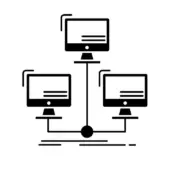Effective UX research can be daunting, especially for teams with limited time and resources. From doing customer research and creating user profiles to conducting usability tests and surveys, figuring out the best way to increase conversions can feel overwhelming. Whether you’re trying to improve your app, website, or overall design, we’re here to help you navigate UX research methods and best practices.
With the right strategies and approach, you can save time and money while generating valuable insights to drive your product forward. In this article, we’ll share four practical tips to help you focus your UX research efforts and maximize your available resources.

Define Clear Research Goals to Help Manage Resources
Clarifying your research goals ahead of time serves two key purposes. First, it helps you communicate more effectively with UX research vendors. Second, it ensures internal alignment on business and product objectives.
Start by identifying the specific questions you want to answer through research. For example, “Why does user engagement drop off after the second screen of our checkout process?” Then, clearly articulate the overarching business goals driving your research. For instance, “Our main goal is to increase conversion of new subscribers.”
Without this level of clarity, UX research can quickly become inefficient and costly. Setting strong research goals provides a clear direction that keeps all stakeholders focused and aligned. This helps you avoid wasting resources on tangents that don’t support your core objectives.
At the end of this process, you should have a concise summary of your research goals that you can easily share with potential research vendors, SaaS tool providers, and strategic partners. This shared understanding allows for accurate, apples-to-apples budget comparisons and improves decision-making.
While it’s possible to conduct research internally, doing so can be time- and energy-intensive. Team members may also carry unintentional biases that skew results. External partners bring fresh perspectives, experience, and efficiency that can enhance the quality and speed of your research.
Here’s an example of clearly stated research goals:
“Our goal is to increase the conversion rate of new subscribers. We want to understand which content types lead to customer disengagement and cart abandonment so we can improve our offerings and reduce churn.”
Distinguish Between the Forest and the Trees
When planning your UX research, it’s important to consider whether you need a strategic or tactical approach, depending on your specific business goals.
Strategic UX research focuses on the “forest”—the bigger picture:
- Examining foundational customer attributes and what drives their loyalty
- Evaluating your product’s value proposition and how it resonates with users
- Assessing your brand’s performance against competitors
- Understanding how your organization prioritizes innovation and new initiatives
Tactical UX research dives into the “trees”—the details:
- Analyzing product functionality and user interactions
- Testing design elements like button colors or layouts
- Measuring engagement metrics like click-through and drop-off rates
- Gauging customer satisfaction through surveys, Net Promoter Scores, task satisfaction, and other feedback
Striking the right balance between strategic and tactical focus ensures your research efforts align with your broader business objectives. This alignment helps you make better use of your time and resources.
Always Align with the Product Team
Ensuring your UX research aligns with your product team’s goals and timeline is critical. Nothing is worse than collecting valuable insights only to find they’ve been delivered too late to be useful.
To avoid this “stale on arrival” scenario, engage key stakeholders—like developers and project managers—early in the research process. Collaborate with them to understand their priorities and find ways to align your research with their development cycles and launch plans.
By syncing with the product team from the start, you can:
- Ensure your research addresses their most pressing questions
- Pool resources and expand the impact of your research
- Time your research so insights are delivered when they’re most actionable
These cross-functional partnerships elevate your research from a siloed activity to a strategic tool with real influence over product decisions.

Consider Value When Assessing Research Cost
When planning your UX research, there are three key factors to balance:
- Cost
- Level of effort
- Business needs
These elements collectively determine your total research cost (TRC). While leaner methods like Guerilla Usability Testing and Lean UX can save money, they may sacrifice methodological rigor. Carefully consider whether those tradeoffs make sense for your project.
Also, think long term. Is this a one-time initiative, or will you need ongoing research support? Investing in quality tools and expert services may cost more upfront but often yields more reliable data and better business outcomes.
The goal isn’t to find the cheapest option—it’s to identify the approach that delivers the most value. High-quality insights reduce the risk of expensive missteps and enable smarter product decisions from the outset. This not only protects your budget but also preserves customer satisfaction and brand reputation.
Leverage Expert UX Research to Drive Results
When you invest in UX research, you’re investing in your users—and that pays off. Delivering products and services that resonate with your audience provides a competitive edge and drives measurable business results.
A successful UX research project starts by following these four time-saving tips. At UpTop, we’re dedicated to helping you make the most of your time and resources. Our expert team brings deep experience across UX strategy, research, design, and product development to ensure your digital experiences are optimized for performance and impact. Let’s connect to explore how we can help you turn research insights into business results.


